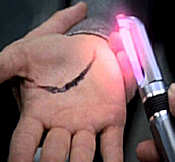 The Treasury Department’s Office of Foreign Assets Control (“OFAC”) issued a guidance today on exports of medical parts to support medical devices legally exported under OFAC licenses to Iran or Sudan, the two countries for which OFAC exercises licensing authority over medical devices. And, not surprisingly, OFAC continues its efforts to resist the mandate of the Trade Sanctions Reform and Export Enhancement Act of 2000, which sought, on obvious humanitarian grounds, to prevent OFAC and other export agencies, from restricting exports of food, medicine and medical devices to sanctioned countries.
The Treasury Department’s Office of Foreign Assets Control (“OFAC”) issued a guidance today on exports of medical parts to support medical devices legally exported under OFAC licenses to Iran or Sudan, the two countries for which OFAC exercises licensing authority over medical devices. And, not surprisingly, OFAC continues its efforts to resist the mandate of the Trade Sanctions Reform and Export Enhancement Act of 2000, which sought, on obvious humanitarian grounds, to prevent OFAC and other export agencies, from restricting exports of food, medicine and medical devices to sanctioned countries.
Under the new guidance, rather than saying simply that exports of replacement parts are ordinarily incident to the export of medical device itself, and therefore allowed, OFAC imposes burdensome conditions on those exports. The potential impact of this red tape on ordinary citizens in Iran and Sudan who are sick or dying just doesn’t matter. Worse, such punitive measures directed at the sick and dying are not going to cause Iran to give up its nuclear aspirations or cause the regime in Sudan to rethink its genocidal policies.
First, if the part that needs to be replaced fails during the one-year period of validity of the export license for the medical device itself, the part can be exported, but only as a one-for-one replacement. But there is another, and more significant, catch. The replacement part must have obtained a specific classification as EAR99 from the Bureau of Industry and Security (“BIS”). And even if the exporter has a classification for the medical device as EAR99, it doesn’t count unless that classification specifically mentions the replacement part in question.
Medical devices on this list don’t require a specific BIS classification, but the list doesn’t include parts. So even though an OFAC license for a digital blood pressure monitor doesn’t require a specific classification from BIS, exporting a replacement display screen for that device does!
Second, if the underlying license has expired, a new OFAC license is required to export the replacement parts. And, again, a specific BIS classification is required for each of the replacement parts exported, even if the device itself was classified as EAR99 or was on the exempted list and did not require a BIS classification. OFAC license approvals can take from 40 days to six months or more, which means that patients may go without care while the exporter waits for a BIS classification and an OFAC license.
Third, even an import of the device back to the United States for repair will require a license — as will the re-export after the device is repaired. The application will require, among other things, a “statement regarding the circumstances under which the medical device broke.” It’s not clear that simply saying that the device was being used and it just failed will suffice as a justification for a license.
If you are an exporter of medical devices under TSRA licenses to either Iran or Sudan, you should make sure that any request for a required BIS classification of the device also includes a request for classification of the important parts of that device. You also should be aware that you can’t solve this problem by continually renewing the license. Parts can only be shipped without a license under this guidance if they are shipped during the original period of validity of the license under which the medical device for which the parts are destined was exported.
 Permalink
Permalink
Copyright © 2009 Clif Burns. All Rights Reserved.
(No republication, syndication or use permitted without my consent.)

 Posted by
Posted by  Category:
Category: 

